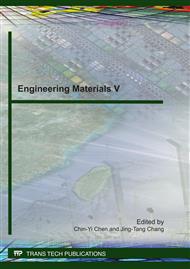p.13
p.22
p.27
p.34
p.40
p.48
p.54
p.62
p.74
Microstructures and Mechanical Properties of Dissimilar Metal Weld A508/52M/316L Used in Nuclear Power Plants
Abstract:
The microstructures and mechanical properties of a dissimilar metal weld A508/52M/316L used in the primary water system of pressurized water reactor (PWR) nuclear power plants were investigated. The weld exhibits complicated microstructures, with significant change around the interfaces A508/52M and 52M/316L. The variations of main elements in 52M weld metal are greater than those in the A508 and 316L, with significant changes in the zones closed to the interfaces. The bulk 52M weld metal has higher and more uneven hardness than both of the base metals A508 and 316L. The HAZ of A508 exhibits the highest hardness value in the weld. The area around the A508/52M interface is the most weak part for stress corrosion cracking (SCC) resistance of the weld in simulated PWR primary water at 290°C. SCC was only found in the specimens tested at +200mV(SHE) but not in those tested at both -780mV and Ecorr (about -500mV).
Info:
Periodical:
Pages:
40-47
Citation:
Online since:
April 2011
Authors:
Price:
Сopyright:
© 2011 Trans Tech Publications Ltd. All Rights Reserved
Share:
Citation:


